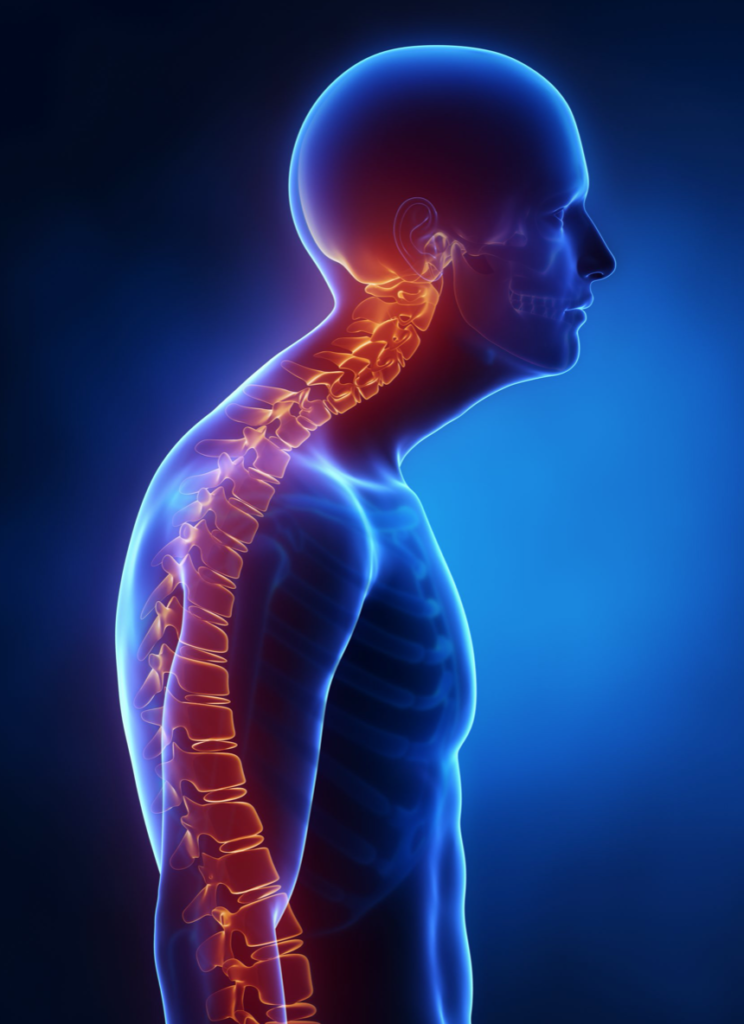KYPHOSIS

What’s Kyphosis?
The term ‘Kyphosis’ refers to a spinal condition characterized by an excessive outward curvature of the spine. The human spine curves slightly at the neck, upper back, and lower back to help stabilize and maintain the structure of the spine. Kyphosis occurs when the outward curve of the spine increases noticeably giving the appearance of an overly rounded or hunched back. Kyphosis can develop in individuals of all ages although this condition tends to occur mostly in young adults with growing bones. In older individuals, kyphosis often occurs due to weakness and loss of flexibility in spinal bones causing them to compress or crack.
In most cases, kyphosis does not require medical attention as this condition tends to alter just the physical appearance of patients. In severe cases, kyphosis may lead to excess pressure on the spine and lungs causing pain or breathing difficulties.
What’s the Causes of Kyphosis?
The most common cause of kyphosis remains poor posture. Poor posture or slouching, especially in individuals with growing bones can stretch the ligaments and muscles holding the spinal bones in place. This excessive stretching pulls the spinal bones out of their normal position, causing a rounded or hunched shape in the spine.
Other common causes of kyphosis may include:
- Osteoporosis
- Spinal fractures
- Arthritis
- Disc degeneration
- Spinal tumors or infections
- Congenital defects, such as Spina Bifida
- Ageing or muscle weakness in the upper back
- Scheuermann’s disease, a condition characterized by unusual wedge-shaped vertebrae in children
What’s the Symptoms of Kyphosis?
Most cases of mild kyphosis may produce no noticeable symptoms other than the characteristic hunched appearance. Individuals with a more severe case of kyphosis may experience muscle pain and stiffness around the spine and back of the thighs. Other symptoms of severe kyphosis may include back pain, breathing difficulties, weakness, pain or tingling in the legs, extreme fatigue, bladder incontinence, and shortness of breath.
How do Spinal Specialists Diagnose Kyphosis?
A spinal specialist will likely carry out a physical examination to check for any abnormal curve in the back. The specialist may ask the patient to perform the ‘Adam’s bend forward test’. This test involves the patient bending forward, keeping the knees straight and the arms hanging free. This simple test helps the specialist properly examine the spine curve for kyphosis or any other excessive spinal curvature.
The specialist may also order imaging tests such as an x-ray of the spine to check the degree of the curve. An MRI scan may prove necessary in cases where the specialist suspects excess pressure on the spinal nerves.
How do Spinal Specialists Treat Kyphosis?
The treatment options for kyphosis include surgical and non-surgical treatments. Spinal specialists recommend non-surgical treatment options for patients with mild cases of kyphosis. These treatment options include physical therapy to strengthen muscles and improve posture, over-the-counter anti-inflammatory medication to relieve pain and the use of back braces in some rare cases. Spinal specialists may recommend back braces for children with kyphosis caused by Scheuermann’s disease.
Surgical treatment for kyphosis may only occur in severe cases that fail to respond to non-surgical treatment options.
References
American Academy of Orthopaedic Surgeons. Kyphosis (Roundback) of the Spine. (https://orthoinfo.aaos.org/en/diseases–conditions/kyphosis-round back-of-the-spine)
McMaster MJ, Singh H (October 1999). “Natural history of congenital kyphosis and kyphoscoliosis. A study of one hundred and twelve patients”. The Journal of Bone and Joint Surgery. American Volume. 81 (10): 1367–83.
Kado DM, Prenovost K, Crandall C (September 2007). “Narrative review: hyperkyphosis in older persons”. Annals of Internal Medicine. 147 (5): 330–8.
Milne JS, Lauder IJ (July 1974). “Age effects in kyphosis and lordosis in adults”. Annals of Human Biology. 1 (3): 327–37.
Kado DM, Prenovost K, Crandall C (September 2007). “Narrative review: hyperkyphosis in older persons”. Annals of Internal Medicine. 147 (5): 330–8.
